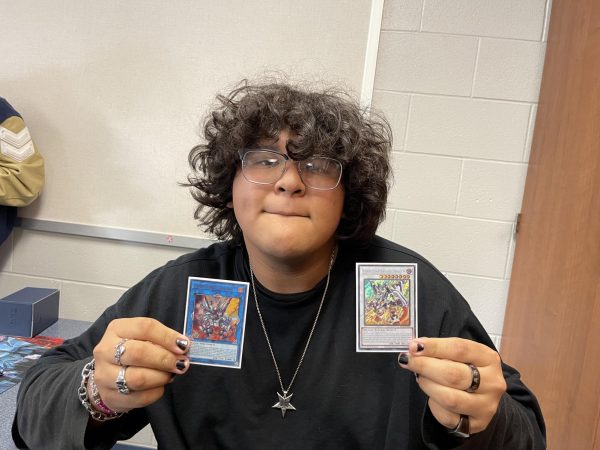Cooler classrooms benefit students, school district

A thermostat that is used to control temperatures in buildings. Courtesy of Creative Commons.
Walking throughout the hallways, you may hear people complaining about how cold the halls and classrooms can be. While this may be true for the hallways, only certain classrooms feel the same.
Chemistry teacher Maranda Kuhn’s classroom is in one of these freezing rooms. While she agrees that her room is cold, she does see the possible benefits.
“Personally, I don’t mind the cold, and I think it helps students stay more alert,” said Kuhn. “However, it does get to the point where we are all wanting to wear coats because it gets so cold.”
For those days where it gets a little too cool in her classroom, Kuhn has a jacket just in case it gets too chilly for her liking.
Someone who doesn’t think it gets too cool is sophomore Kylie Crooks. She likes the cold and actually thinks that she works better in the chilly classrooms, even if she would prefer to raise the temperatures a bit.
Just like Mrs. Kuhn, Kylie thinks the cold helps her focus, and as long as she wears a jacket, she is okay with the temperature.
With how cool the school can be, it may seem like the energy is abundant and never malfunctions, but this is not the case. Like any other appliance, the heating and cooling units can get under too much pressure, causing them to break.
Custodian Jeff Warner sometimes makes these fixes to the heating and cooling units. He works after school to keep the units up and working.
“With this size of the building and as many boilers, chillers and heating or cooling units to keep the HVAC running properly, there is a lot of preventative maintenance that takes place along with repairs,” Warner says.
With so many boilers, chillers and heating units, the energy cost can rocket up in price. This is why NACS joined an energy program.
“It is expensive to air-condition such a large building such as CHS. In 2009, NACS enrolled in an energy conservation program to help cut utility costs district-wide,” said Warner.
Someone who is part of the staff on this energy conservation team is Dave Hey. He makes sure the temperature in the school sticks to the pre-set guidelines and doesn’t go too far over or too far under.
“The energy program has not just picked a random temperature out of the air and go with it in our buildings. We heat and cool to the established guidelines,” Hey said.
Hey thinks that even though some people may believe the school is too cold, it all comes down to who they are and what they prefer.
“Being cold is relative to each individual,” said Hey. “Any one student may be warm in the same room whereas another student may be on the cool side. A number of things factor into this; how one is dressed, body types, medication one may be on, and on it goes.”

Being a student of 11 years, Ashlyn has experienced many things. From art class to math class, reading and writing have always been her favorite subjects....













